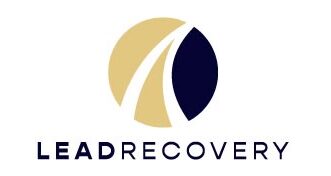Alcohol Abuse in the Workforce: Recognizing, Addressing, and Preventing
Alcohol abuse in the workforce is a significant issue that can have detrimental effects on individuals, organizations, and society as a whole. From decreased productivity and workplace accidents to strained relationships and legal ramifications, the impact of alcohol abuse extends far beyond the individual drinker. In this comprehensive guide, we’ll explore the various aspects of alcohol abuse in the workforce, including recognizing the signs, addressing the problem, and implementing preventive measures.
The Prevalence of Alcohol Abuse in the Workplace
Alcohol abuse is more common in the workforce than many people realize. According to the National Institute on Alcohol Abuse and Alcoholism (NIAAA), approximately 15% of U.S. workers report drinking during work hours, while 1 in 8 employees admit to being impaired at work due to alcohol use.
Recognizing the Signs of Alcohol Abuse in the Workplace
Recognizing the signs of alcohol abuse among employees is essential for early intervention and support. Some common indicators include:
- Frequent absences or tardiness
- Decreased productivity or performance issues
- Unexplained injuries or accidents on the job
- Changes in behavior or mood swings
- Smelling of alcohol or visible signs of intoxication
Supervisors and colleagues should be trained to recognize these signs and address concerns appropriately.
Addressing Alcohol Abuse in the Workplace
Addressing alcohol abuse in the workplace requires a multifaceted approach involving education, intervention, and support. Here are some steps organizations can take:
- Education and Training: Provide employees with information about the risks of alcohol abuse and resources for seeking help. Conduct training sessions to educate supervisors on how to recognize and address alcohol-related issues in the workplace.
- Employee Assistance Programs (EAPs): Offer confidential counseling and support services for employees struggling with alcohol abuse. EAPs can provide assessment, referral, and short-term counseling to help employees address substance abuse issues.
- Drug and Alcohol Testing: Implement drug and alcohol testing policies to deter alcohol abuse and ensure a safe work environment. Random testing and post-accident testing can help identify employees who may be under the influence of alcohol.
- Supportive Workplace Culture: Foster a supportive and non-judgmental workplace culture where employees feel comfortable seeking help for alcohol-related problems. Encourage open communication and provide resources for employees and their families.
- Employee Wellness Programs: Implement wellness programs that promote healthy lifestyle choices, including stress management, nutrition, and alcohol awareness. Offer incentives for participation and provide resources for employees to access support services.
Preventing Alcohol Abuse in the Workplace
Preventing alcohol abuse in the workplace requires proactive measures to create a healthy and supportive work environment. Here are some strategies organizations can implement:
- Policy Development: Develop clear and comprehensive alcohol and drug policies that outline expectations, consequences, and resources for employees. Communicate these policies regularly and ensure they are consistently enforced.
- Workplace Wellness Initiatives: Promote a culture of wellness by offering employee assistance programs, stress management workshops, and access to mental health resources. Encourage work-life balance and provide opportunities for employees to recharge and relax.
- Education and Awareness Campaigns: Launch education and awareness campaigns to increase understanding of alcohol abuse and its impact on the workplace. Provide information about responsible drinking, signs of alcohol abuse, and available resources for seeking help.
- Training for Managers and Supervisors: Train managers and supervisors to recognize the signs of alcohol abuse and address concerns with sensitivity and professionalism. Provide guidance on how to support employees and refer them to appropriate resources for assistance.
- Community Partnerships: Collaborate with local organizations, healthcare providers, and community resources to promote alcohol awareness and prevention initiatives. Offer opportunities for employees to participate in community events and activities focused on substance abuse prevention.
Conclusion
Alcohol abuse in the workforce is a complex and multifaceted issue that requires a coordinated and proactive response from employers, employees, and communities. By recognizing the signs of alcohol abuse, addressing the problem with compassion and support, and implementing preventive measures to create a healthy and supportive work environment, organizations can help reduce the impact of alcohol abuse on individuals and society as a whole. Together, we can work towards creating safer, healthier, and more productive workplaces for everyone.


